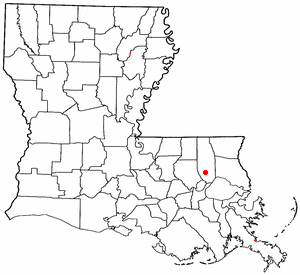
The Battle of Fredericksburg was fought December 11–15, 1862, in and around Fredericksburg, Virginia, in the Eastern Theater of the American Civil War. The combat between the Union Army of the Potomac commanded by Maj. Gen. Ambrose Burnside and the Confederate Army of Northern Virginia under Gen. Robert E. Lee included futile frontal attacks by the Union army on December 13 against entrenched Confederate defenders along the Sunken Wall on the heights behind the city. It is remembered as one of the most one-sided battles of the war, with Union casualties more than twice as heavy as those suffered by the Confederates. A visitor to the battlefield described the battle as a "butchery" to U.S. President Abraham Lincoln.

The Second Battle of Bull Run or Battle of Second Manassas was fought August 28–30, 1862, in Prince William County, Virginia, as part of the American Civil War. It was the culmination of the Northern Virginia Campaign waged by Confederate Gen. Robert E. Lee's Army of Northern Virginia against Union Maj. Gen. John Pope's Army of Virginia, and a battle of much larger scale and numbers than the First Battle of Bull Run fought on July 21, 1861, on the same ground.

The Peninsula campaign of the American Civil War was a major Union operation launched in southeastern Virginia from March to July 1862, the first large-scale offensive in the Eastern Theater. The operation, commanded by Major General George B. McClellan, was an amphibious turning movement against the Confederate States Army in Northern Virginia, intended to capture the Confederate capital of Richmond. Despite the fact that Confederate spy Thomas Nelson Conrad had obtained documents describing McClellan's battle plans from a double agent in the War Department, McClellan was initially successful against the equally cautious General Joseph E. Johnston, but the emergence of the more aggressive General Robert E. Lee turned the subsequent Seven Days Battles into a humiliating Union defeat.

Jackson's Valley campaign, also known as the Shenandoah Valley campaign of 1862, was Confederate Maj. Gen. Thomas J. "Stonewall" Jackson's spring 1862 campaign through the Shenandoah Valley in Virginia during the American Civil War. Employing audacity and rapid, unpredictable movements on interior lines, Jackson's 17,000 men marched 646 miles (1,040 km) in 48 days and won several minor battles as they successfully engaged three Union armies, preventing them from reinforcing the Union offensive against Richmond.

The Vicksburg campaign was a series of maneuvers and battles in the Western Theater of the American Civil War directed against Vicksburg, Mississippi, a fortress city that dominated the last Confederate-controlled section of the Mississippi River. The Union Army of the Tennessee under Major General Ulysses S. Grant gained control of the river by capturing this stronghold and defeating Lieutenant General John C. Pemberton's forces stationed there.

The Battle of Kinston was fought on December 14, 1862, in Lenoir County, North Carolina, near the town of Kinston, as part of the Goldsborough Expedition of the American Civil War.

The Battle of New Bern was fought on March 14, 1862, near the city of New Bern, North Carolina, as part of the Burnside Expedition of the American Civil War. The US Army's Coast Division, led by Brigadier General Ambrose Burnside and accompanied by armed vessels from the North Atlantic Blockading Squadron, were opposed by an undermanned and badly trained Confederate force of North Carolina soldiers and militia led by Brigadier General Lawrence O'B. Branch. Although the defenders fought behind breastworks that had been set up before the battle, their line had a weak spot in its center that was exploited by the attacking Federal soldiers. When the center of the line was penetrated, many of the militia broke, forcing a general retreat of the entire Confederate force. General Branch was unable to regain control of his troops until they had retreated to Kinston, more than 30 miles away. New Bern came under Federal control, and remained so for the rest of the war.

The Battle of Seven Pines, also known as the Battle of Fair Oaks or Fair Oaks Station, took place on May 31 and June 1, 1862, in Henrico County, Virginia as part of the Peninsula Campaign of the American Civil War.

The Battle of Cedar Mountain, also known as Slaughter's Mountain or Cedar Run, took place on August 9, 1862, in Culpeper County, Virginia, as part of the American Civil War. Union forces under Maj. Gen. Nathaniel P. Banks attacked Confederate forces under Maj. Gen. Thomas J. "Stonewall" Jackson near Cedar Mountain as the Confederates marched on Culpeper Court House to forestall a Union advance into central Virginia. After nearly being driven from the field in the early part of the battle, a Confederate counterattack broke the Union lines resulting in a Confederate victory. The battle was the first combat of the Northern Virginia campaign.

The opening phase of what came to be called the Burnside Expedition, the Battle of Roanoke Island was an amphibious operation of the American Civil War, fought on February 7–8, 1862, in the North Carolina Sounds a short distance south of the Virginia border. The attacking force consisted of a flotilla of gunboats of the Union Navy drawn from the North Atlantic Blockading Squadron, commanded by Flag Officer Louis M. Goldsborough, a separate group of gunboats under Union Army control, and an army division led by Brig. Gen. Ambrose Burnside. The defenders were a group of gunboats from the Confederate States Navy, termed the Mosquito Fleet, under Capt. William F. Lynch, and about 2,000 Confederate soldiers commanded locally by Brig. Gen. Henry A. Wise. The defense was augmented by four forts facing on the water approaches to Roanoke Island, and two outlying batteries. At the time of the battle, Wise was hospitalized, so leadership fell to his second in command, Col. Henry M. Shaw.
The Battle of Waynesboro was fought on March 2, 1865, at Waynesboro in Augusta County, Virginia, during the American Civil War. It was a complete victory for Brig. Gen. George Armstrong Custer and the final battle for Confederate Lt. Gen. Jubal Early, whose force was destroyed.

The Battle of Belmont was fought on November 7, 1861, in Mississippi County, Missouri. It was the first combat test in the American Civil War for Brig. Gen. Ulysses S. Grant, the future Union Army general in chief and eventual U.S. president, who was fighting Major General Leonidas Polk. Grant's troops in this battle were the "nucleus" of what would become the Union Army of the Tennessee.
The First Battle of Murfreesboro was fought on July 13, 1862, in Rutherford County, Tennessee, as part of the American Civil War. Troops under Confederate cavalry commander Brig. Gen. Nathan Bedford Forrest surprised and quickly overran a Federal hospital, the camps of several small Union units, and the jail and courthouse in Murfreesboro, Tennessee. All of the Union units surrendered to Forrest, and the Confederates destroyed much of the Union's supplies and destroyed railroad track in the area. The primary consequence of the raid was the diversion of Union forces from a drive on Chattanooga.

The Battle of Baton Rouge was a ground and naval battle in the American Civil War fought in East Baton Rouge Parish, Louisiana, on August 5, 1862. The Union victory halted Confederate attempts to recapture the capital city of Louisiana.
Selma, Alabama, during the American Civil War was one of the South's main military manufacturing centers, producing tons of supplies and munitions, and turning out Confederate warships. The Selma Ordnance and Naval Foundry complex included a naval foundry, shipyard, army arsenal, and gunpowder works. Following the Battle of Selma, Union Maj. Gen. James H. Wilson's troops destroyed Selma's army arsenal and factories, as well as much of the city.
USS Whitehall was a steamer acquired by the Union Navy during the American Civil War. She was assigned blockade duty; however, her condition was not always considered seaworthy, and she was plagued with condition problems.
Burnside's North Carolina Expedition was a series of engagements fought along the North Carolina Coast between February and June 1862. The expedition was part of Winfield Scott's overall Anaconda Plan, which aimed at closing blockade-running ports inside the Outer Banks. The amphibious operation was carried out primarily by New England and North Carolina troops under Brig. Gen. Ambrose E. Burnside and assisted by the North Atlantic Blockading Squadron under Captain Louis M. Goldsborough.

The Battle of Malvern Hill, also known as the Battle of Poindexter's Farm, was fought on July 1, 1862, between the Confederate Army of Northern Virginia, led by Gen. Robert E. Lee, and the Union Army of the Potomac under Maj. Gen. George B. McClellan. It was the final battle of the Seven Days Battles during the American Civil War, taking place on a 130-foot (40 m) elevation of land known as Malvern Hill, near the Confederate capital of Richmond, Virginia and just one mile (1.6 km) from the James River. Including inactive reserves, more than fifty thousand soldiers from each side took part, using more than two hundred pieces of artillery and three warships.

The 3rd Massachusetts Volunteer Militia Regiment was a peacetime regiment of infantry that was activated for federal service in the Union Army for two separate tours during the American Civil War. The regiment consisted of companies from Plymouth and Bristol Counties.

The Expedition to Pass Manchac and Ponchatoula was a military engagement of the American Civil War that took place September 13–15, 1862 in and around Pass Manchac and Ponchatoula, Louisiana. The objective of the Union troops was to sabotage the Manchac bridge and to possibly capture Confederate Brig. Gen. M. Jeff Thompson to prevent a reprise attack from the Confederates into New Orleans. Union forces reached the town under fire from Confederate troops and ended up damaging the Manchac railroad bridge and burning 20 freight train cars after overwhelming the Confederate forces. The Confederate then regrouped with reinforcements and attacked the federal troops, forcing them back to New Orleans.















